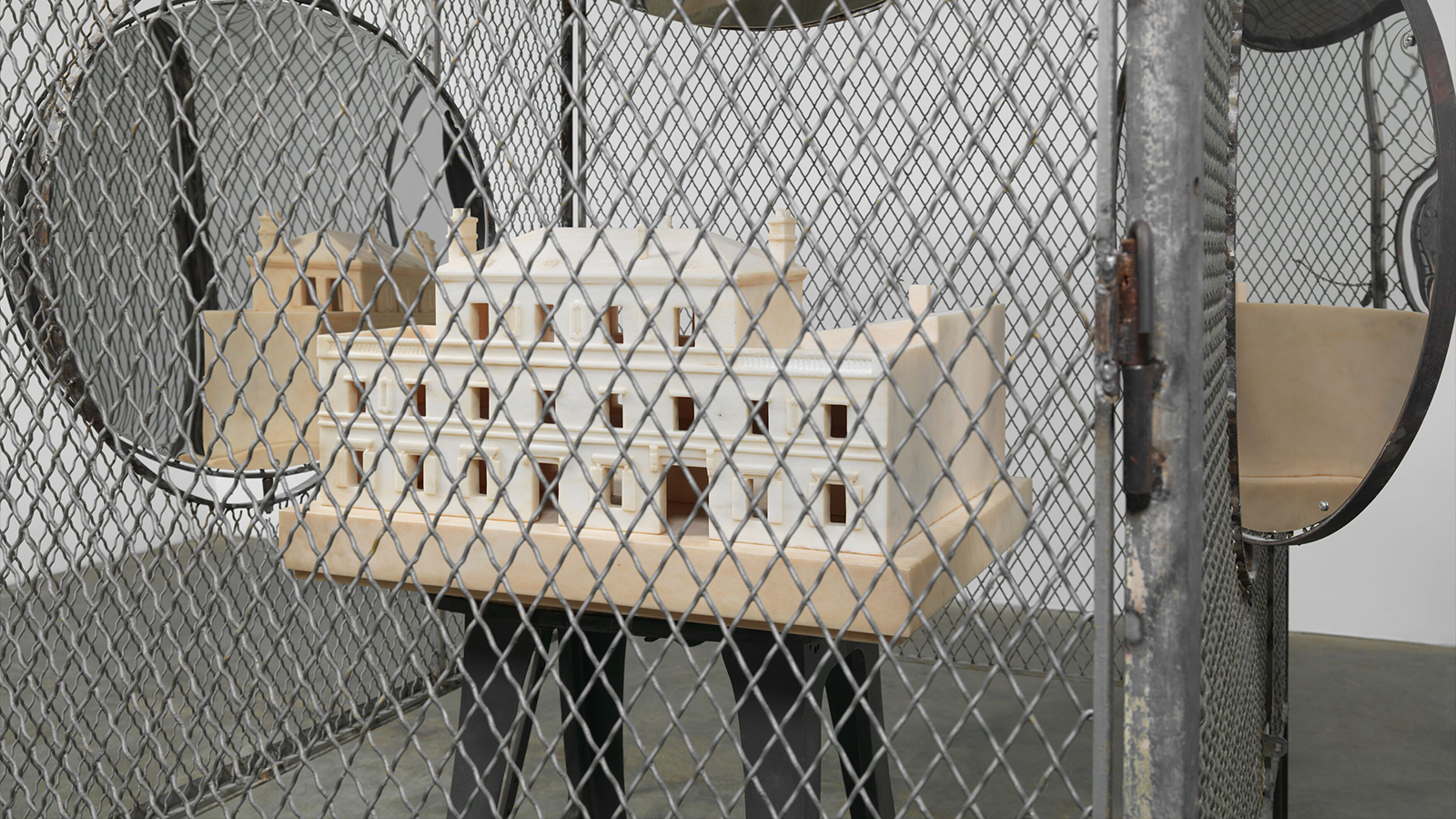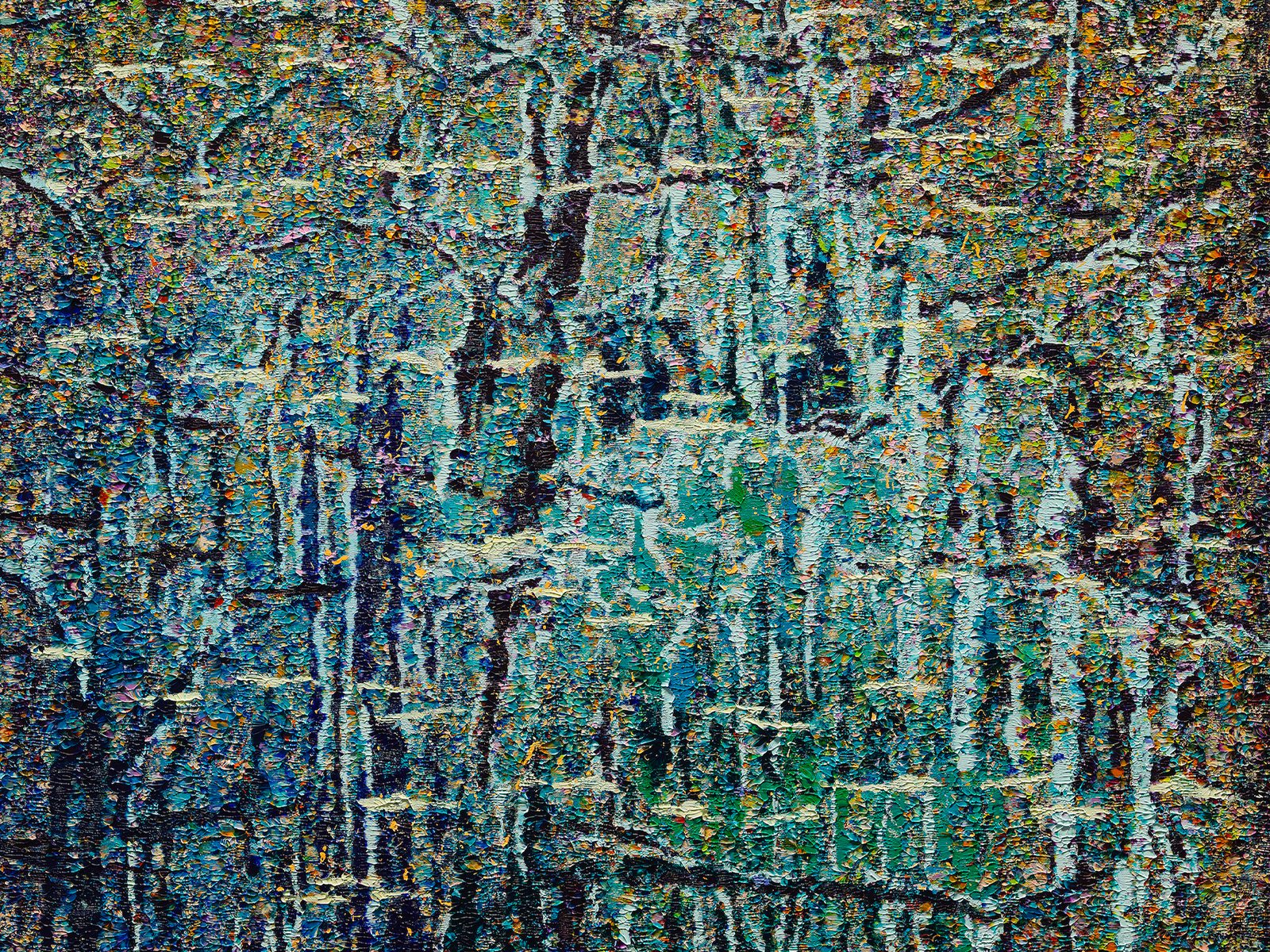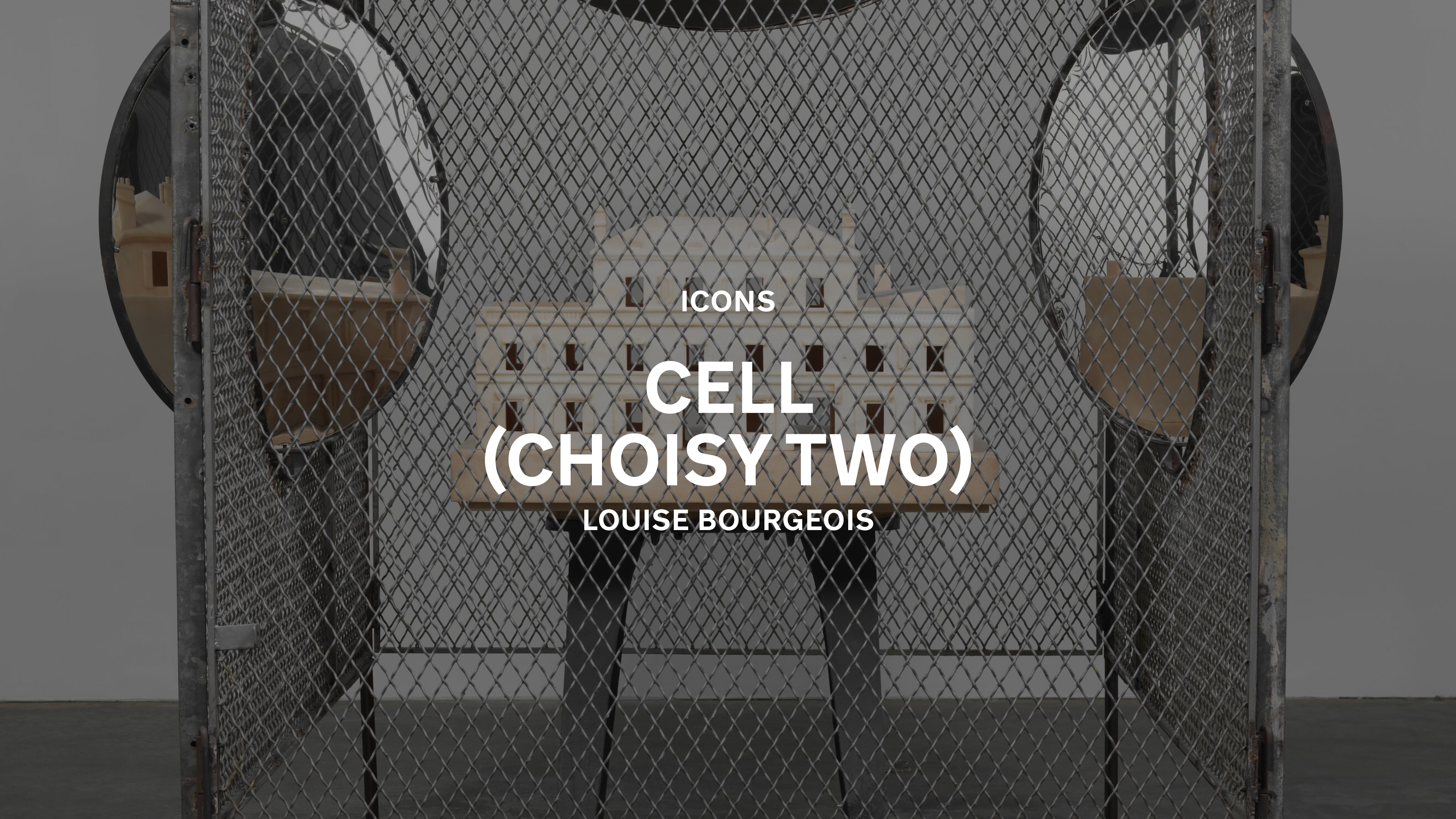‘Cell (Choisy Two)’ is from Louise Bourgeois’s series of remarkable and highly personal installations called the Cells. Inviting associations with the biological cell, imprisonment, or a place of solitary contemplation, these late works distil many of the central themes that resonate throughout Bourgeois’s storied career: childhood memories, familial relationships, and the unconscious.
The work will be presented at our booth at Art Basel Hong Kong from 28 – 30 March 2025.

1 / 7
Louise Bourgeois
Cell (Choisy Two)
- 1995
- Pink marble, steel, mirrors
- 216.5 x 194.3 x 198.8 cm / 85 1/4 x 76 1/2 x 78 1/4 in
Created from a steel wire cage, pivoting mirrors, and a pink marble scale model of her early childhood home at Choisy-le-Roi in the provincial outskirts of Paris, ‘Cell (Choisy Two)’ confronts and transmutes the contradictory feelings of confinement and security Bourgeois felt as a child, and bares the impact of psychoanalysis on her work.

The mesh steel cage invites the viewer to look but refuses physical access to the inner sanctuary. It also incorporates three rotating mirrors which perforate two sides and the top of the cage. These mirrors create a series of warped reflections and alternate perspectives that disrupt any sense of direct perception.

‘The Cells represent different types of pain: physical, emotional and psychological, mental and intellectual... Each Cell deals with a fear. Fear is pain... Each Cell deals with the pleasure of the voyeur, the thrill of looking and being looked at.’ [1]
Louise Bourgeois
Bourgeois’s replica of where she spent several formative years is consistent with her incorporation of autobiographical forms within her work. The mirrors offer multiple perspectives on her childhood home, intertwining the viewer’s perception with the artist’s unconscious memories of that place. By doing so, Bourgeois not only fulfills the voyeuristic desire to look and be looked at, but also proposes the ambiguities inherent in both positions.
Opening on 25 March, we will present ‘Louise Bourgeois. Soft Landscape’ at our Hong Kong gallery, showcasing a selection of works from the 1960s to 2008, including rarely exhibited sculptures and works on paper.

Louise Bourgeois
Born in France in 1911, and working in America from 1938 until her death in 2010, Louise Bourgeois is recognized as one of the most important and influential artists of our time. For over seven decades, Bourgeois’s creative process was fueled by an introspective reality, often rooted in cathartic re-visitations of early childhood trauma and frank examinations of female sexuality. Articulated by recurrent motifs (including body parts, houses and spiders), personal symbolism and psychological release, the conceptual and stylistic complexity of Bourgeois’s oeuvre—employing a variety of genres, media and materials—plays upon the powers of association, memory, fantasy and fear.

Icons
Discover extraordinary masterpieces from celebrated modern masters and leading contemporary artists coming to market.

Art Basel Hong Kong
This year’s booth at Art Basel Hong Kong will reveal exceptional works by historical masters, alongside leading contemporary voices, while introducing several acclaimed artists who have joined the gallery in the past year.
1.) Louise Bourgeois quoted in ‘Louise Bourgeois. The Secret of the Cells,’ Munich/DE: Prestel, 1998, p. 81.
2.) Louise Bourgeois quoted in ‘Louise Bourgeois. The Locus of Memory. Works 1982-1993’, New York NY: The Brooklyn Museum/Harry N. Abrams, 1994, p.50.
Portraits: Louise Bourgeois with Dominique Bozo and a marble sculpture of her childhood home in Choisy-le-Roi (in progress) in her Brooklyn studio, New York, 1992 © The Easton Foundation. Photo: Sebastian Piras; Louise Bourgeois in her Brooklyn studio, New York, 1993. Photo: © Philipp Hugues Bonan. Courtesy The Easton Foundation






